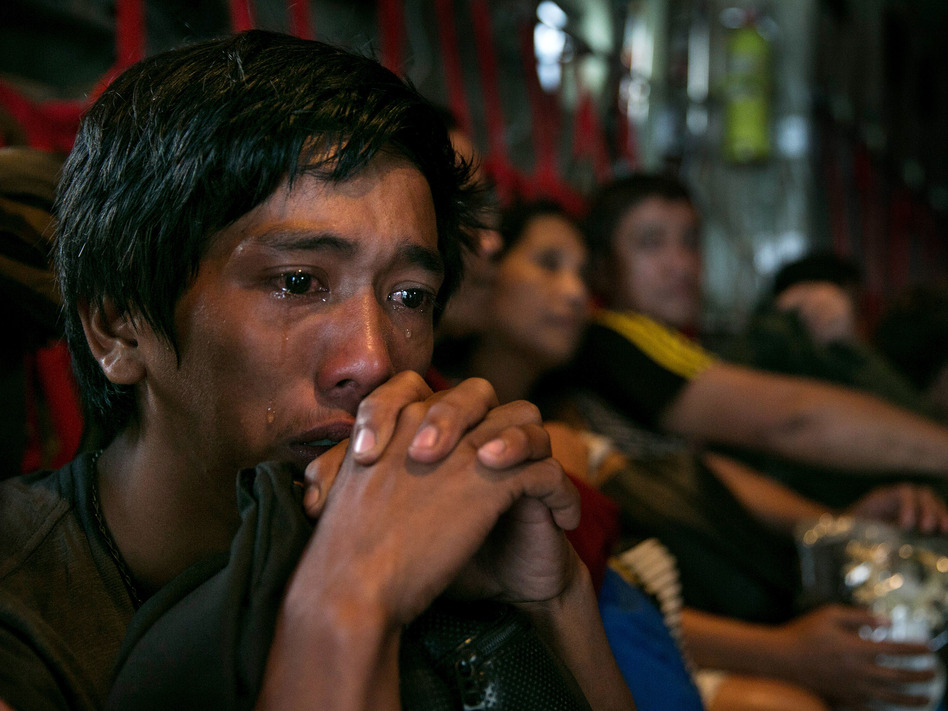
(We updated at 10:40 a.m. ET to include the latest official death toll of more than 2,300.)
HOW TO HELP: The U.S. State Department is coordinating with The mGive Foundation to collect funds for aid groups that are responding to the crisis in the Philippines.
As some trucks loaded with food and other aid arrive in the Philippines city of Tacloban they’re being looted by residents struggling to survive in the aftermath of Typhoon Haiyan, NPR’s Anthony Kuhn said Wednesday on Morning Edition.
He’s spoken with many of those people and they seem to be “ordinary folks who would not do such things in ordinary times,” Anthony told host Steve Inskeep. “But they are doing such things to stay alive.”
In Tacloban, he added, a fight for “sheer survival” is under way as people in the city of more than 220,000 search for food, water and other essentials. As of Wednesday, there weren’t enough government troops in the area to control things.
Anthony’s report from the scene underscores this headline from The New York Times: “Mayor of Typhoon-Ravaged City Urges Residents to Flee.” Here’s how the Times starts its story:
“TACLOBAN, the Philippines — The mayor of this typhoon-ravaged city urged residents on Wednesday afternoon to flee to other cities and find shelter there with relatives if they could, saying that the local authorities were struggling to provide enough food and water and faced difficulties in maintaining law and order.”
Euro News has posted some video of looting at a store in Tacloban and writes that “desperation, thirst, hunger and opportunism are said to be provoking anarchy.
It was last Friday when Haiyan, known as Yolanda in the Philippines, made landfall. It was packing winds that sometimes reached or exceeded 200 mph. As of late Wednesday morning in the U.S., the official death toll from the Philippines government stood at more than 2,300 (President Benigno Aquino III has said the final toll is likely to be between 2,000 and 2,500). More than 660,000 are thought to have been forced from their homes. As many as 9.8 million people, U.N. officials say, were affected by the storm.
While the government, international aid groups and foreign militaries that have rushed to the affected area are having trouble getting to the victims because of blocked roads, the U.S. commander on the scene told NPR early Wednesday that American assistance has quickly ramped up.
Marine Brig. Gen. Paul Kennedy said that “this disaster is 5 days old for the people of the Philippines, [but] we’ve effectively only had U.S. military operations for the last 72 hours. And in 72 hours we’ve gone from essentially a cold start — I flew in here with 6 people and a suitcase staff — to running … aircraft. We moved 65 tons of humanitarian assistance supplies yesterday. That’s a lot of stuff. We’ll do the same today.”
NPR’s coverage of the typhoon is collected here. For another view of how desperate things are in some places, see our post from Tuesday:
Read original article – Published November 13, 2013 7:25 AM
In Shattered Filipino City, A Fight For ‘Sheer Survival’
